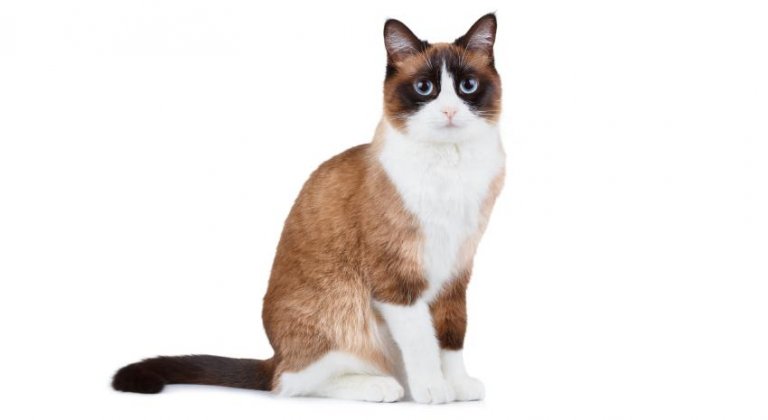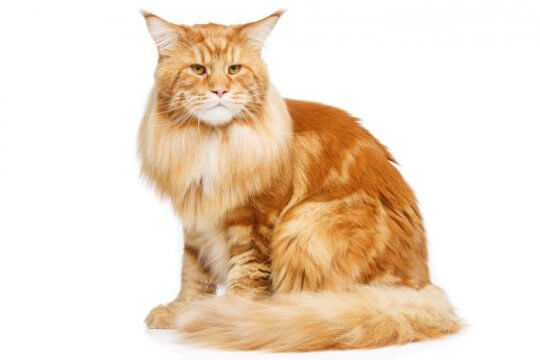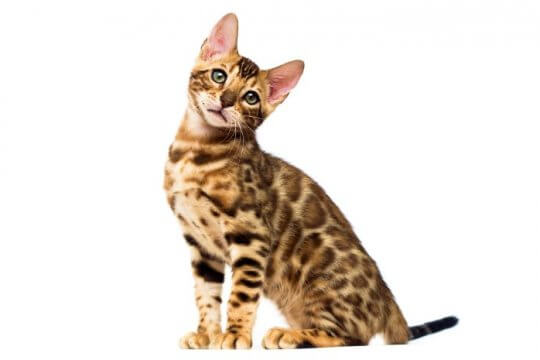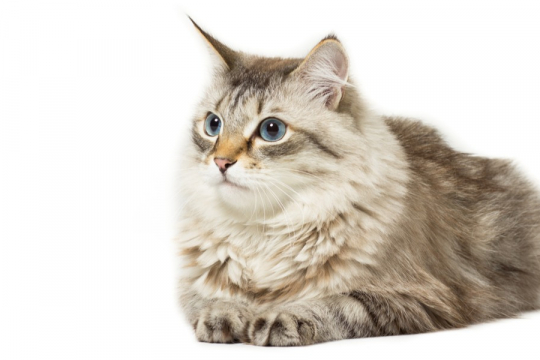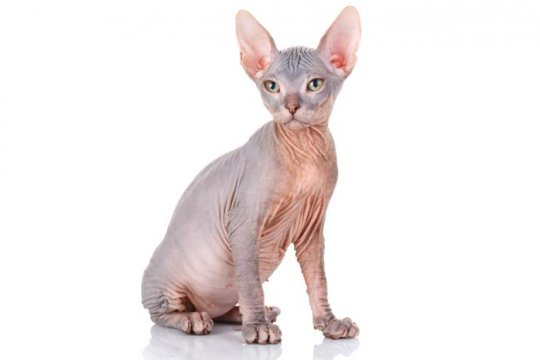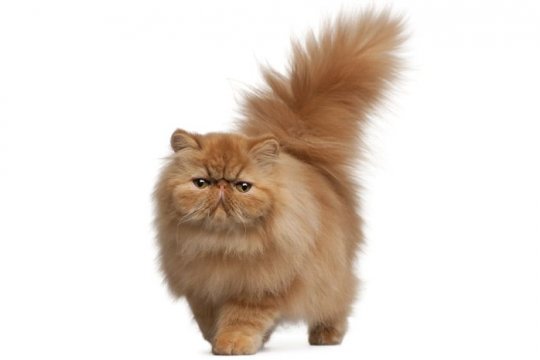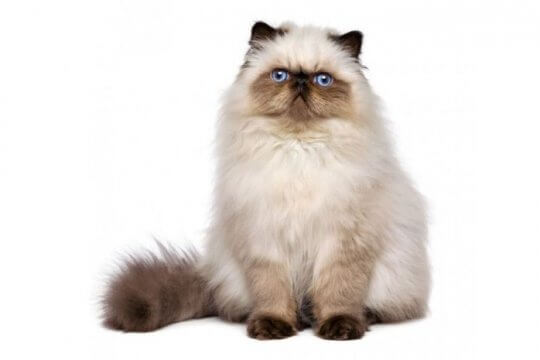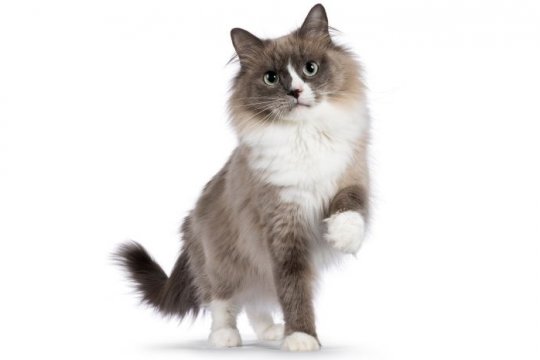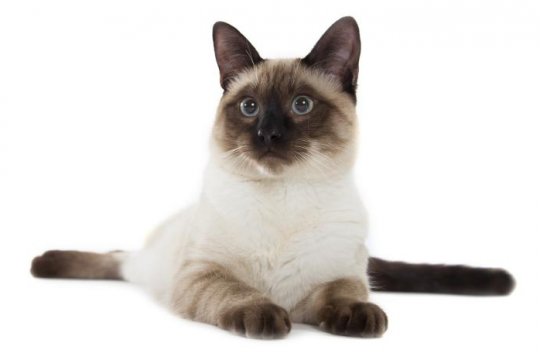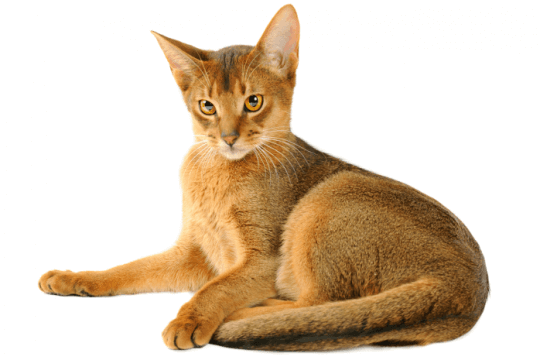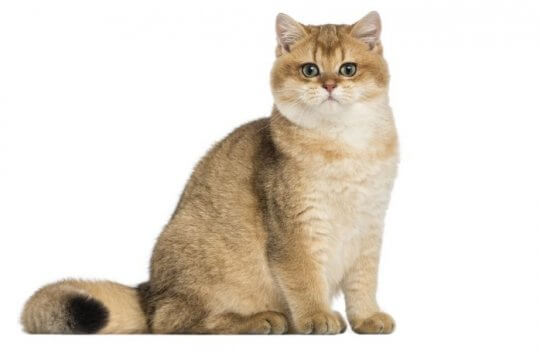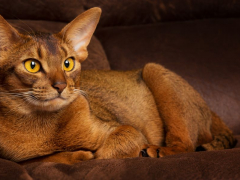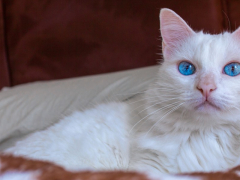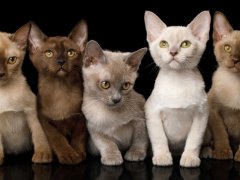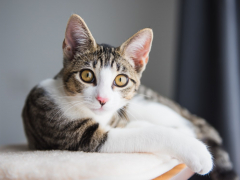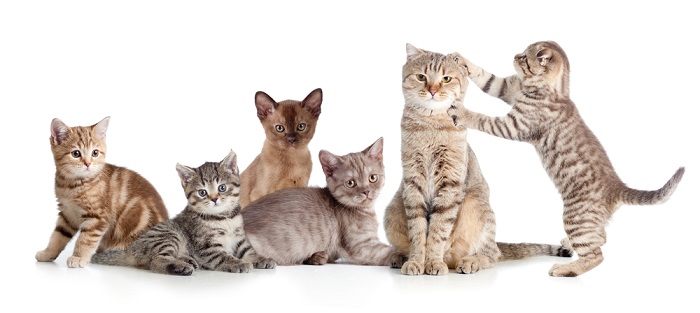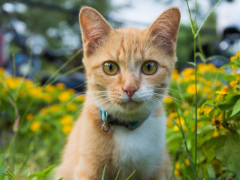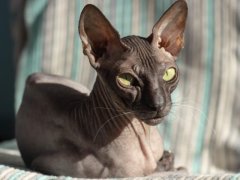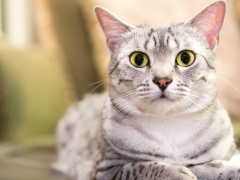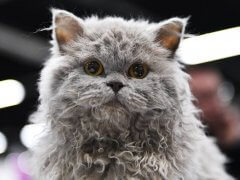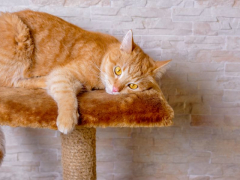Personality and Temperament
Adorable white feet give the Snowshoe cat its name, and distinctive white markings in the shape of an upside down “V” adorn its muzzle. Cuteness isn't the only thing that makes the Snowshoe such a wonderful cat: This breed absolutely loves people. In fact, Snowshoes are among the friendliest cats! While they do have a tendency to choose one person as their absolute favorite, they like everyone and readily make friends with new people shortly after being introduced.
Expect lots of fun and games if you bring a Snowshoe cat into your family. These kitties are curious and playful, and they like nothing quite so much as spending plenty of quality time with their favorite people. They'll help you with all sorts of tasks from typing to cleaning and when it's time to cook dinner or wash dishes, they happily provide advice from a nearby vantage point - perhaps a high place like the top of the refrigerator.
Snowshoe cats are expert cuddlers, too. If you have room on your lap, they'll take advantage of the opportunity to curl up for a movie or a bit of reading. At bedtime, they're likely to stretch out beside you, perhaps sliding under the covers or sharing your pillow.
Just like other breeds with lots of Siamese in their background, the Snowshoe cat requires lots of attention and becomes terribly unhappy if left alone for long periods of time. If boredom sets in, these kitties may develop unwanted behaviors and vocalize loudly. Fortunately, Snowshoe cats get along very well with other felines. If your family can't always be around, a second cat can help prevent loneliness and the destructive habits that can come with it.
Thanks to their outgoing, agreeable personalities, Snowshoe cats can be a great fit for any family with lots of love and attention to give.
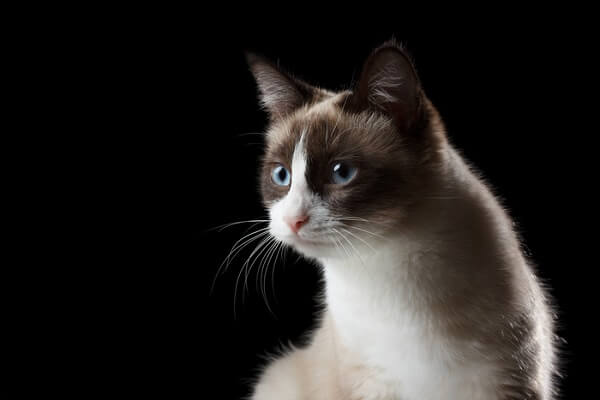
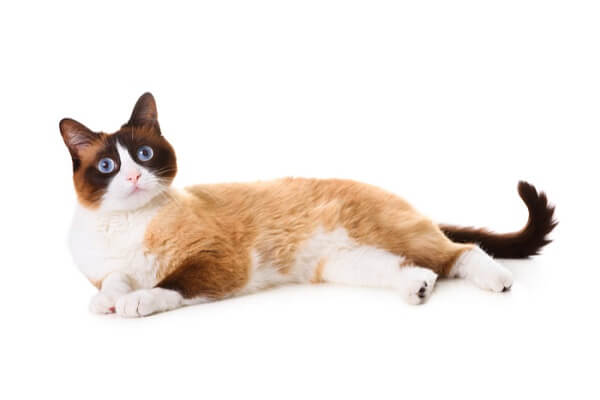
Care
Nutrition
Grooming
Exercise
Health
Snowshoe cats don't have any special nutritional needs, however they are known for exceptional longevity when their families prioritize good health and proper nutrition. We recommend offering your Snowshoe cat a high-quality, age-appropriate diet with plenty of protein and low levels of carbohydrates. This can help prevent obesity, which is a common health issue in older Snowshoe cats.
Snowshoe cats doing excellent job of looking after their own coats, which are typically very short and low-shedding. Occasional brushing can help remove any loose hair that might otherwise end up on furniture and clothing.
Because Snowshoes are prone to dental issues, it's a very good idea to teach your cat how to have their teeth brushed from a young age. Routine at-home dental care is a great habit that can help your cat enjoy better health overall.
Last but not least, consider keeping your Snowshoe cat's claws clipped. Toenail trimming is the easiest way to preserve your furniture, which these active cats are likely to jump on.
Snowshoe cats are highly active, with lots of energy to burn, particularly in their younger years. They love interactive play, either with their human family members or with other pets, and they appreciate toys of all kinds. These cats are perfectly capable of making their own fun when given a crinkly paper bag or a big empty box, and they love climbing cat towers, perching on window seats, and stretching out with the help of tall scratching posts.
Just like other highly sociable cat breeds, Snowshoes often enjoy leashed walks through the neighborhood. It takes some time and effort to teach a cat how to walk on a leash, but this is fantastic exercise that your Snowshoe will benefit from for life.
Snowshoe cats are generally healthy, however they can suffer from some of the same problems that plague Siamese cats including hypertrophic cardiomyopathy, autosomal dominant polycystic kidney disease, and periodontal disease. These issues aren't common, however they are worth watching for.
Like Siamese, some Snowshoe cats have crossed eyes and kinks in their tails. Crossed eyes can have a negative effect on peripheral vision, however neither of these issues is painful or shortens the cat's lifespan.
History
Even though the Snowshoe cat breed wasn't officially developed until the middle of the 20th century, Siamese kittens with white feet and white markings on their muzzles have occurred naturally for as long as the breed has been part of human history.
In the 1960s, Dorothy Hinds-Daugherty, a Siamese breeder in Philadelphia noticed that three kittens – all from the same litter – developed Snowshoe markings instead of solid color points. Since white feet are not acceptable according to the Siamese breed standard, she decided to begin a brand-new line. Thus, the Snowshoe cat breed began.
When the white-footed kittens reached maturity, they were crossed with American Shorthair cats with tuxedo markings. At first, the resulting kittens were called Silver Lace cats. Others, including cat breeder Vikki Olander took notice, and the white markings which were originally viewed as Siamese faults became the hallmarks of a wonderful new breed that combines all the best traits of its founding members.
The American Cat Fanciers Association (ACFA) accepted the Snowshoe in 1982 and granted championship status in 1990. The International Cat Association (TICA) granted Snowshoe cats official recognition in 1993. In the UK, Snowshoe cats attained full breed status with The Governing Council of the Cat Fancy (GCCF) in 2013.
Today, the Snowshoe cat breed enjoys recognition worldwide. Show quality examples of the Snowshoe cat breed are relatively rare since it can be difficult to produce kittens that carry the recessive genes for both colorpoint and the piebald pattern that gives Snowshoes their distinctive appearance. It's easier to find pet quality Snowshoe cats with either too much or too little light to qualify for showing.
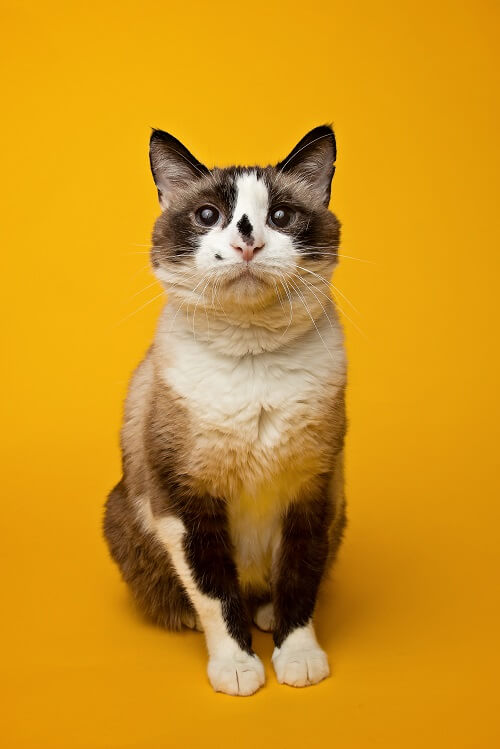
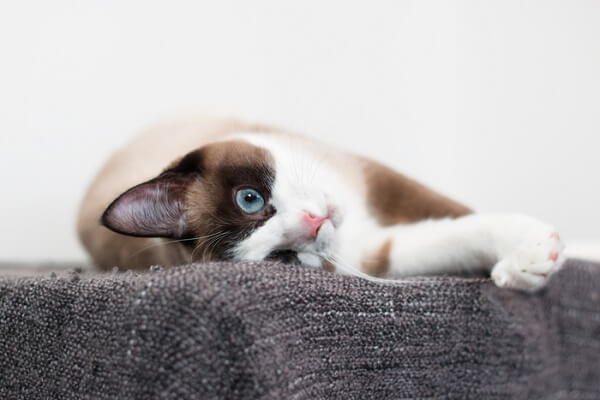
The Breed Standard
Eyes
Legs & Paws
Tail
The Breed Standard
Body
Head
Ears
Coat
Color
FAQ
How much does a Snowshoe cat cost?
Snowshoe cats cost between $600 - $1200.
How big does this breed cat's cat get?
Snowshoe cats tend to be medium in size. A fully grown Snowshoe cat might weigh between 3 - 5 kg or more and range in height anywhere from about 23 - 28 cm inches tall.
How long do Snowshoe cats live?
The Average lifespan for Snowshoe is 14-19 years.
